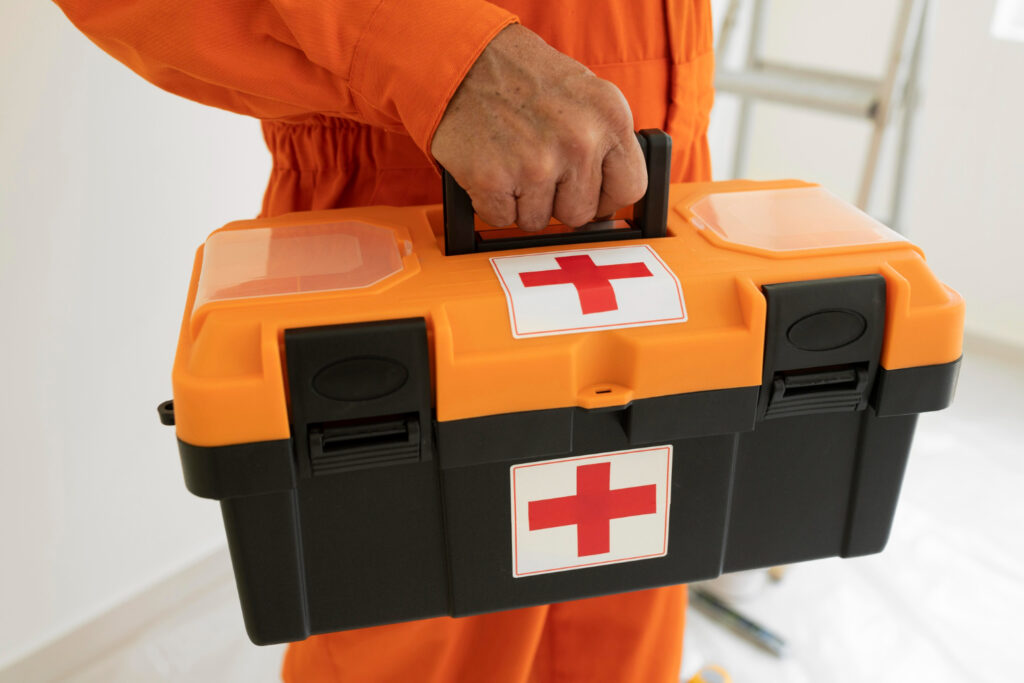When it comes to natural forces, few are as powerful and unpredictable as a cyclone. These massive storm systems can produce damaging winds, heavy rains, and flooding. In the face of such a powerful event, it is critical to be prepared and take the necessary precautions to ensure your and your loved ones’ safety. Weathering the storm unleashed by a cyclone demands unwavering preparedness and a steadfast commitment to safety. This guide will walk you through a comprehensive set of precautions to take during a cyclone, assisting you in navigating the chaos and uncertainty that it brings.
Table of Contents
Understanding Cyclones
What is a Cyclone?
A cyclone, also known as a hurricane or typhoon, is a massive storm system with strong winds spiraling around a low-pressure centre. These storms can cover large areas and bring heavy rain, resulting in flooding and widespread devastation. A cyclone’s strength is classified using the Saffir-Simpson Hurricane Wind Scale, which ranges from 1 (weakest) to 5 (strongest). The higher the category, the greater the precautions required.

Tracking Cyclones
Cyclone paths are tracked and predicted by meteorological agencies all over the world using advanced technology. They provide up-to-date information on the storm’s projected path, intensity, and estimated landfall time. One of the most critical precautions during a cyclone is staying informed of its progress. Monitor trusted weather sources, such as the Met Office or official weather apps, regularly for updates, alerts, and warnings. Pay attention to evacuation notices and any instructions from local authorities to ensure your safety. Keeping up with these forecasts is critical for making informed decisions about your and your family’s safety.
Preparing Before the Cyclone Hits
Create an Emergency Kit
As the old adage goes, “Hope for the best, prepare for the worst.” Before a cyclone hits, create an emergency kit that includes the supplies you need to sustain yourself and your family for at least a few days. An emergency kit is an essential part of your cyclone preparedness. Nonperishable food, drinking water, a first aid kit, flashlights, batteries, a battery-powered radio, essential medications, and important documents should all be included. Put these items in a waterproof container that is easily accessible. Having these items readily available will help deal with any disruption caused by the cyclone.

Reinforce Your Home
Taking precautions to strengthen your home can help to reduce damage during a cyclone. Trim overhanging trees, secure loose objects in your yard, and use storm shutters or boards to reinforce doors and windows. Consider investing in impact-resistant windows and a sturdy roof if you live in a high-risk area.
Creating a Family Communication Plan
Establishing Contact
Communication can be difficult during a cyclone because of power outages and disrupted cellular networks. Create a family communication plan that includes a designated out-of-town contact person. This person can serve as a hub of communication for family members to share information.
Emergency Alerts
Keep up to date by using official channels such as weather apps, local news, and emergency alerts. Many authorities issue alerts via wireless emergency alert systems, which can reach your smartphone even if cellular networks are unavailable.
Weathering the Storm: Evacuation Procedures
Know Your Evacuation Routes
Under certain circumstances, authorities may issue evacuation orders for areas prone to the impact of severe cyclones. Follow evacuation instructions promptly and cooperate with local authorities. Make yourself familiar with the evacuation routes in your area. Plan alternate routes in case certain roads become closed or flooded. Public shelters are frequently set up for those who need to evacuate, so know where they are and how to get there quickly.
Packing for Evacuation
Prepare a “go bag” with important documents, personal identification, necessary medications, and basic supplies. If you need to evacuate, time is likely to be of the essence. Pack your emergency kit, important documents, cash, clothing, and any irreplaceable items as soon as possible. Make sure your pets are included and that their needs are met.
Weathering the Storm: During the Cyclone
Stay Indoors
Stay inside if the cyclone hits. Look for a small, windowless room in the centre of your house, preferably on the ground floor and away from doors and windows. This will offer the best defence against flying debris and shattered glass. During a cyclone, staying indoors and avoiding unnecessary risks is crucial. Strong winds and flying debris pose a significant hazard and can result in serious injury or even death if outdoors. Stay away from windows and exterior doors, and avoid using electrical appliances or landline phones during a storm to reduce the risk of electrocution.
Monitor Weather Updates
Keep a battery-powered radio nearby to hear weather updates and official instructions. This will keep you up to date on the cyclone’s progress and any changes in its path.
Ensuring Safety of Loved Ones
Children and the Elderly
During the cyclone, children and elderly family members may require additional assistance. Keep them close, provide comfort, and attend to any special needs they may have to ensure their safety.
Pets
Don’t forget about your four-legged friends! Keep them inside, and if your family must evacuate, make sure they accompany you. Prepare pet food, water, and any medications they may require.
Protect your assets by strengthening weak areas. Trim any overhanging branches that could potentially fall and cause damage during strong winds. Secure loose items such as patio furniture or garden tools so they don’t become projectiles. Consider installing storm shutters or plywood boards over windows to reduce the risk of shattered glass. Reinforce garage doors and make sure they are properly secured.
Weathering the Storm: After the Cyclone Passes
Safety First
Even after the cyclone has passed, danger may still exist. Keep an eye out for downed power lines, debris, and floodwaters. Avoid going outside until authorities say it’s safe to do so.
Check for Damage
Inspect your home for damage and prioritise any necessary repairs for safety. Document the damage for insurance claims, and plan for potential difficulties in locating contractors and materials in the aftermath.
Emotional Well-being
Dealing with Stress
A cyclone can be a very stressful event. If you need to talk about your experience, reach out to friends, family, or professionals. Anxiety can be reduced by engaging in stress-relieving activities such as deep breathing exercises or meditation.
Reconnecting with Community
In the aftermath of a cyclone, communities frequently come together. Participate in local recovery efforts or support groups to share your story and assist others in need.
Building Resilience for the Future
Learn from the Experience
Use the lessons learned from surviving the storm to better prepare for future cyclones. Consider what went well and what could be improved, and then modify your emergency plans accordingly.
Investing in Resilience
Consider making long-term investments to improve your home’s cyclone resistance. Retrofitting your home with stronger materials, elevating it to prevent flooding, and constructing a safe room are all ways to improve your chances of successfully weathering the storm.
Conclusion
Weathering a cyclone requires careful planning, preparation, and resilience. You can navigate this challenging event with greater confidence if you understand the nature of cyclones, prepare your home and emergency supplies, stay informed, and prioritize safety. Remember that your safety and the safety of your loved ones should always come first. While cyclones can be devastating, your preparedness can mean the difference between staying safe and recovering quickly in their aftermath.





